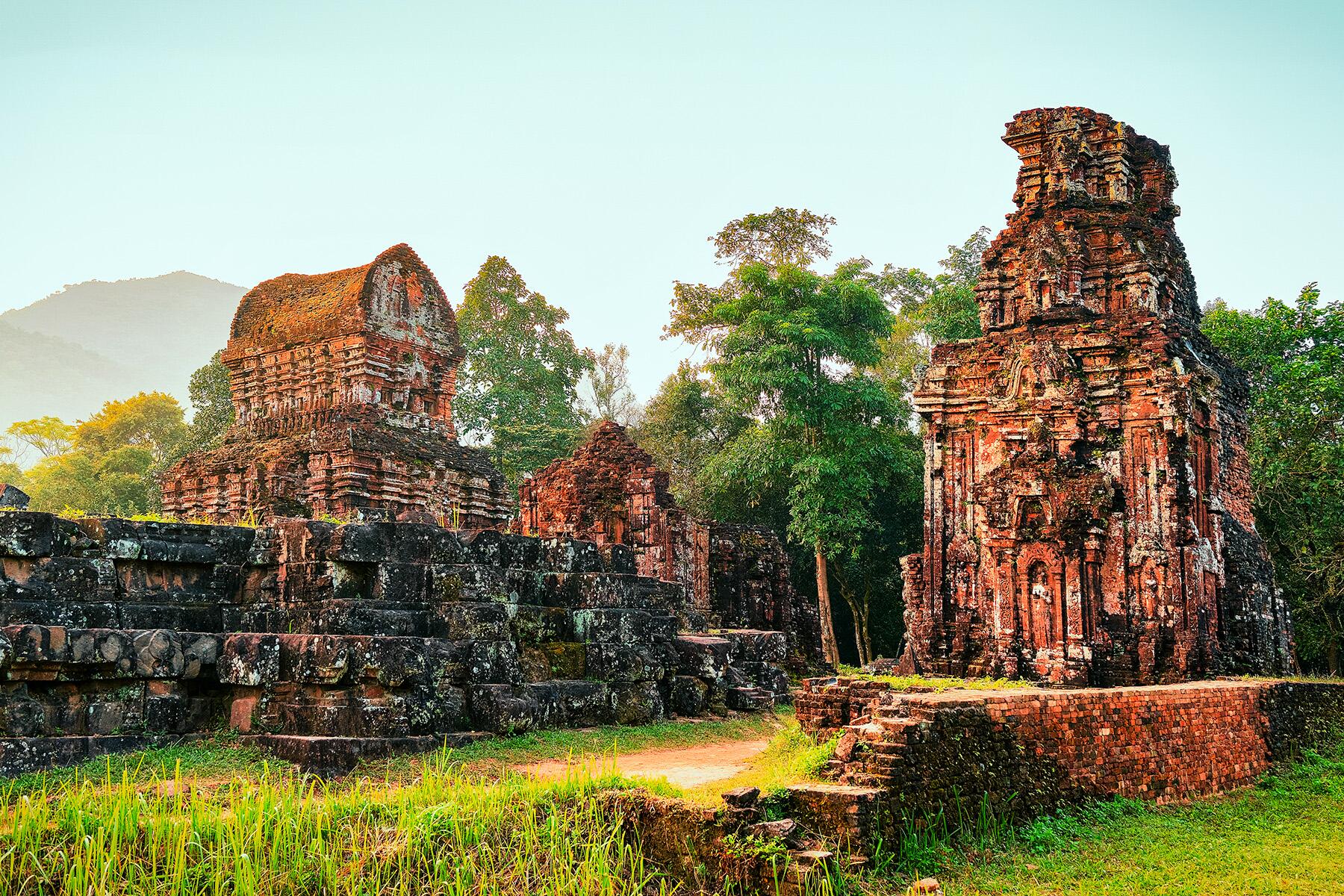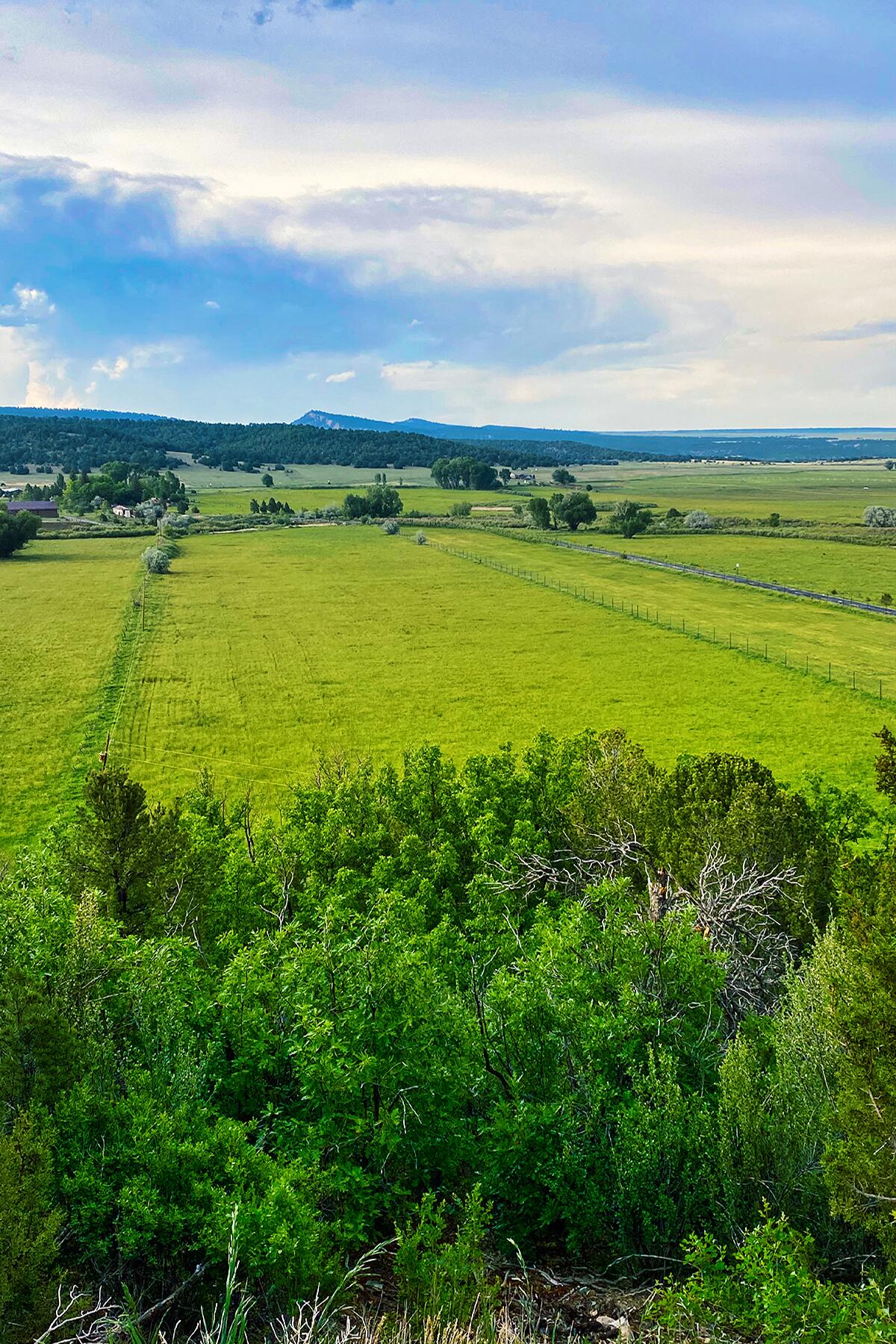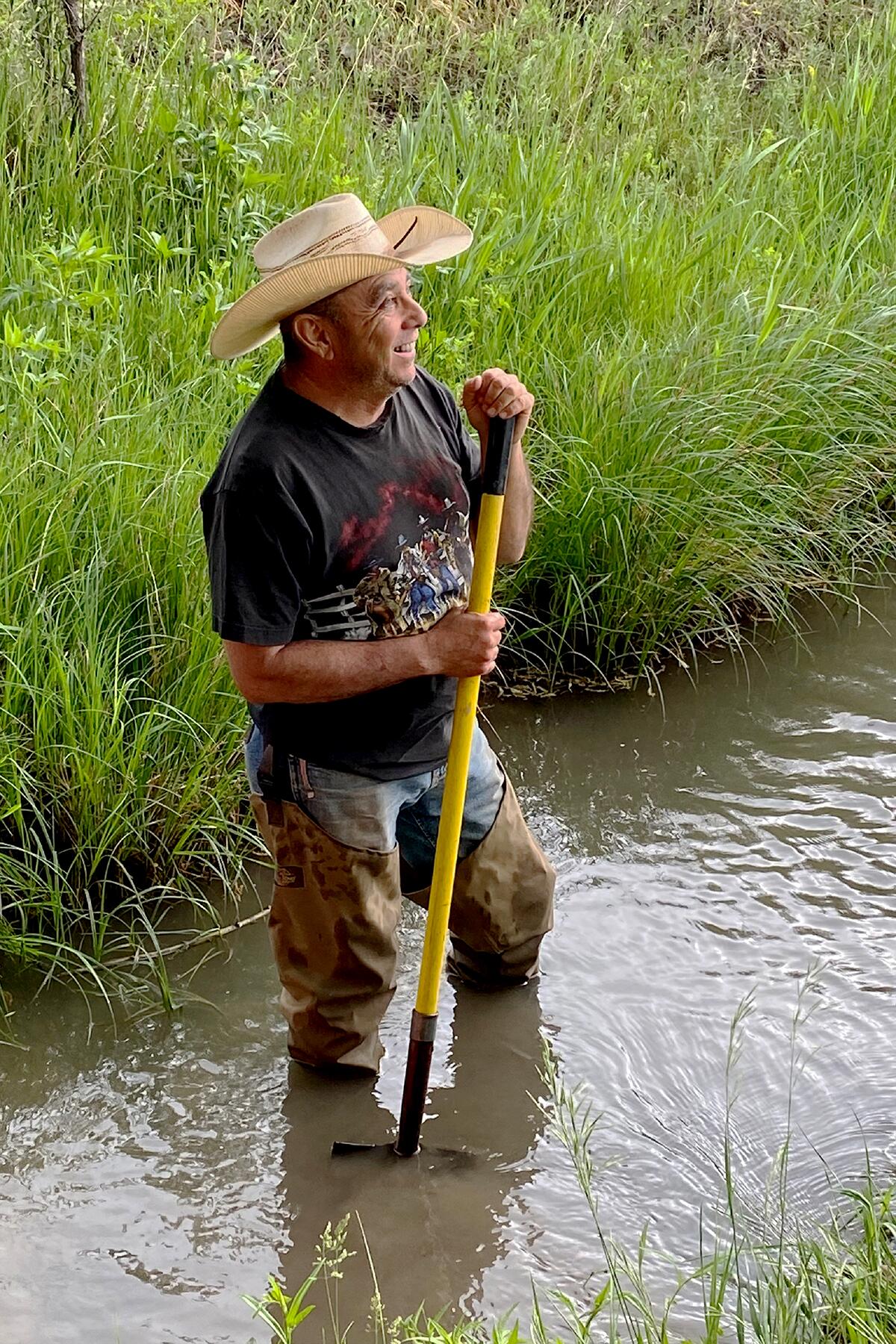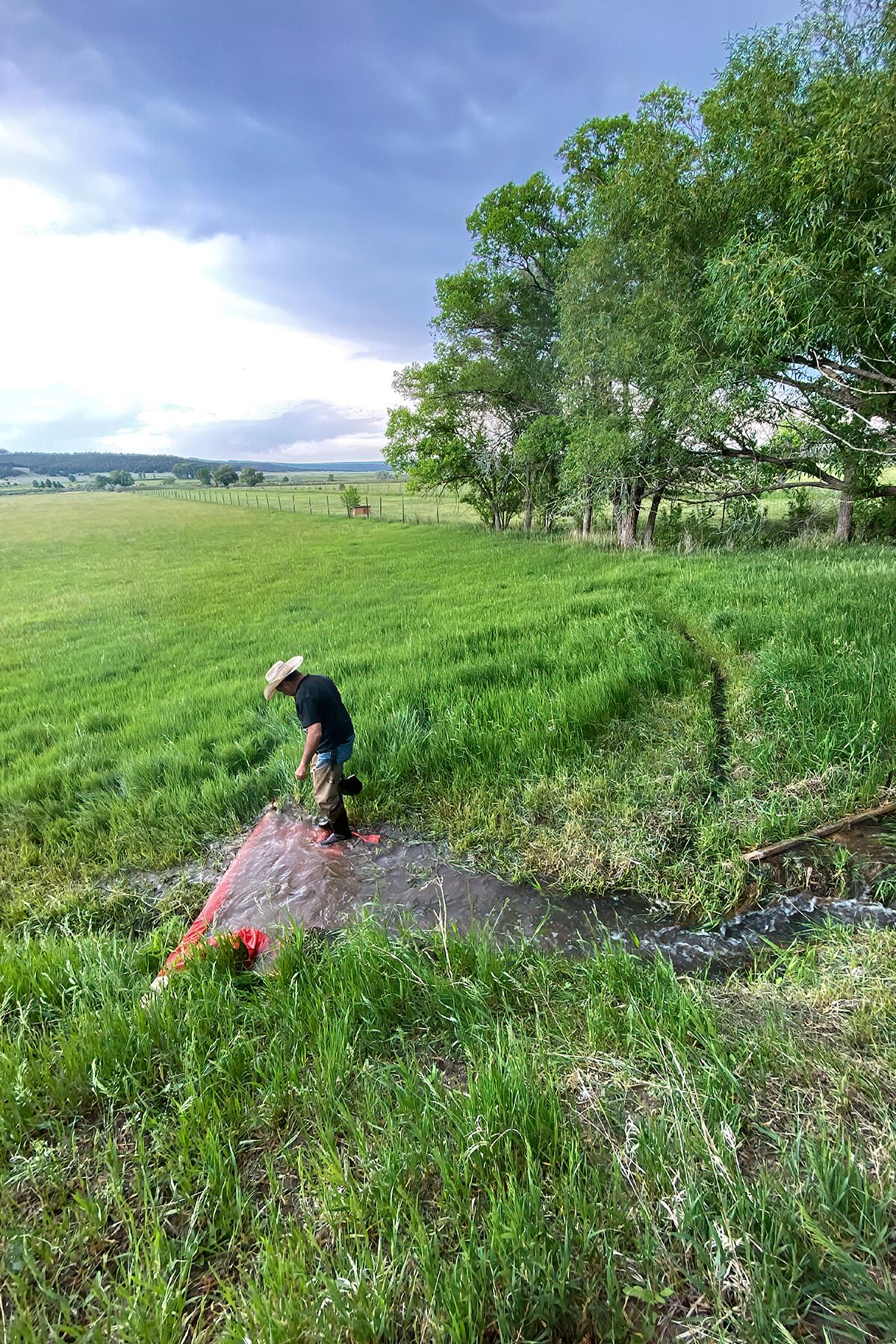In New Mexico, traditional irrigation ditches (known as acequias) are a living history tied to early Spanish land grants and Indigenous claims extending back before the founding of the United States.
“Do you know what an acequia is?” asked my friend, Buz. “An irrigation ditch?” I replied, exhausting my knowledge of the subject. “Come here tomorrow at three; the mayordomo is opening the check to the acequia madre and placing an atarque for my milpa.” Lost but fascinated, I researched and here’s what I found out.
Acequia (Spanish, from the Arabic “water carrier”) came from North Africa to Spain to the New World. From Mexico, the technology was brought to the US. Through a contract with Indigenous cultures, improvements, variations, and adaptations to regional conditions were added along the way. Now, hundreds of years later, some of the original structures are still used.
The basic process is deceptively simple: water from a nearby source (usually a river or stream) is channeled through a series of ditches and delivered to fields via gravity-fed smaller chutes. Unlike Roman aqueducts, constructing the systems didn’t require an army of specialized laborers and tons of materials. Locals used what was at hand, and it took a village to build it. The process created communities and was so important that according to historian and acequia specialist Alexandra McKinney, “When founding a town, the early Spanish built the acequia first, then the church.” So, it has always been— as the Spanish dicho (saying) goes—water is life.
Recommended Fodor’s Video
I thought about that as I drove to my friend’s small ranch in pastoral Mora County, a little over an hour’s drive from Santa Fe, New Mexico. There had been some summer thunderstorms, but—as in much of the American Southwest—drought maintained a strong grip on the land. Crops and livestock suffered, as did those who cared for and made their living from them. Patches of green were interspersed with too much pale gold and dry brown. But the land was still beautiful; farms and ranches nestled amid rolling hills, which rose into surrounding forested mountains. Human habitation was sparse but represented both rich and poor, as there were a few large new homes scattered among small, weathered properties that were littered with the rusting remains of vehicles and farm equipment. Cattle huddled close to windmill-serviced water tanks, coyotes prowled, and ravens perched in the trees waiting for opportunistic meals provided by speeding drivers.
My friends Buz and Barnette Backenstow had recently moved back to New Mexico and into a true ranch-style home—complete with working ranchland. Their single hayfield was maintained with the help of locals. I got there in time to head to the milpa (actually cornfield, but used colloquially to describe a patch of agriculture). We walked downhill and across a single wooden bridge over a narrow ditch dug into the rich earth. There was about a foot of clear, still water at the bottom, and beyond it were neat furrows carved into a waiting, thirsty field. Buz wore work clothes and waterproof shoes. We waited for the mayordomo (a knowledgeable community member elected to administrate water usage. The word is translated as “servant,” indicating the reverence for the traditional irrigation system).
Matthew Romero soon arrived, a strong stout man with a round, smiling face and wistful eyes that glistened under a broad-brimmed straw cowboy hat. He wore thigh-high waders. His tools were both traditional and straightforward: a long-handled hoe and shovel. He also had a roll of heavy orange plastic spindled around a wood 2×4. He handed one end to Buzz and stepped into the narrow channel. They unrolled the material and anchored it in place on both sides of the ditch with shovelfuls of heavy mud. This was the atarque, a temporary diversion dam. The work completed, Romero stepped up out of the ditch and headed off again. “Is that it?” I asked my friend.

Seconds later, in reply, a surge of water coursed through, rapidly filling the canal. When it reached a 30-inch depth, Romero reappeared to pull up a piece of rough metal that acted as a water gateway to the plowed fields below. He worked his shovel like a sculptor, moving the earth and clearing blocking debris. The freed water gushed through a small culvert, followed a path downhill, and then out between furrows to flood the field. The mayordomo looked at his watch, the Backenstow milpa was allotted 48 hours of water. Everyone followed the rules; it was a matter of community responsibility, respect, and honor.
Acequias are living history with water rights often tied to early Spanish land grants and Indigenous claims extending back before the founding of the USA. But most of today’s problems stem from changing times. Cycles of drought, which so negatively impacted the ancient Puebloan cultures along the Rio Grande, have been exacerbated by the strains of increased population, agricultural and industrial demands, and a combination of political and legal decisions. Individual states and the Federal Government have dammed natural waterways to the point where there is only one wild river left in America—the Gila—and that is under threat.

Compacts between states mean that water sourced in the Colorado Rockies is marked for use as far south as Texas. Modern technology is also a win/lose for acequias. Although cement-lined ditches and pipes are more efficient in delivering water, seepage from the traditional acequias dug in the earth had a bonus effect of extending riparian habitats and access to water for wildlife. So modern tech is beneficial for agriculture, but the old ways are more ecologically balanced.
And there’s a human toll as well. Mayordomo Mike Ulibarri, citing the community bedrock of ongoing tradition, puts it this way: “families have taken care of the land for hundreds of years. My son has participated in sacando la acequia (annual spring cleaning of the ditches) since he was six.” For Carlos Herrera, there’s a spiritual element. A trained environmental scientist and member of a Pueblo tribe, he says, “after a (ceremonial) dance, we go down to an acequia to wash earth pigment paint off our bodies.”
The sad contemporary state of acequias is much more visibly evident in urban settings. Santa Fe used to have 80 such ditches coursing through its heart. “Today,” notes Herrera, “there are only two.” In historic Las Cruces, a sunbaked, dusty, and weed-choked trough is all that remains of a principal acequia. Three blocks away in the middle of town is a dry thoroughfare named “Water Street.”
As water tumbled into his parcel of land, Buz, a retired mechanical engineer, admired the precision of construction and the ingenuity. In times past, acequia builders looked at two containers of water spaced apart on the land to site construction angles for a natural gravity-fed flow through planted fields.
As we all admired the beauty, Mayordomo Romero said, “Acequias build relationships and communities because we share feelings, ideas, and help each other.” Then, chuckling at a memory, he added, “Though, sometimes, I do have to play referee.” Maybe the past isn’t a bad place to start for the future.
Amazing find by an amazing couple. Sometimes the reasons and ways things were done made not just since but also was best for our earth. Great find and I enjoyed this Article.







Such a great article I even joined Fodors so I could comment! Wonderful photos. Important info. Well written.